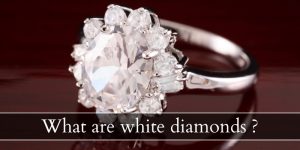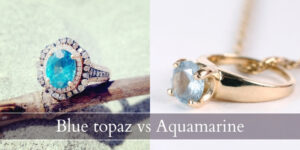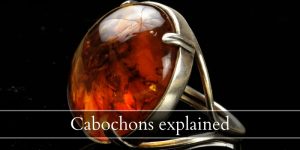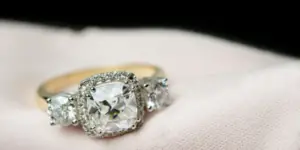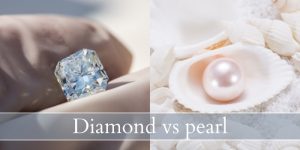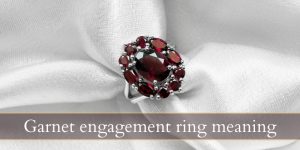If you’re looking for the perfect diamond to propose with you might run into some bow tie diamonds. You might’ve seen them before without knowing what they are, and now you hear about them again.
What is a bow tie effect in diamonds, and why does it matter ? Are bow tie diamonds bad ? Do all diamonds get a bow tie in them ? And how can you avoid this effect in diamond so you don’t get scammed ? Let’s take a look.
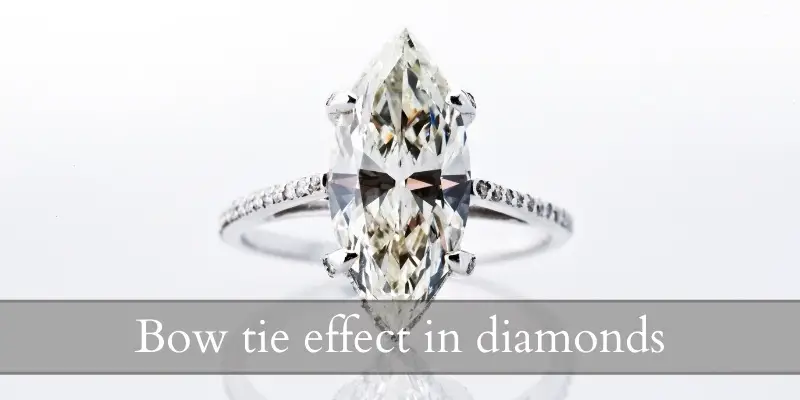
Bow tie effect in diamonds
A bow tie effect in diamond is the appearance of a dark patch (shadow) towards the center of the diamond. It resembles a man’s bow tie, and is the result of light not hitting those facets of the diamond. The bow tie may be more or less noticeable, depending on the quality of the diamond cut, and how the light hits the table of the diamond. In some angles it may be less noticeable, but it will always show if viewed to-down.
The bow tie effect is the result of poorly calculated angles when the diamond is cut and polished. Sometimes this is the result of minimizing losses, and a diamond cutter can only do so much. It is also difficult to avoid in fancy shapes like marquise, oval, and pear brilliant cuts.
A rough diamond comes in no real shape, and it is the diamond cutter’s job to minimize losses from the rough and obtain maximum profit from selling the diamond. This means that if an imperfection is positioned in such a way that the diamond will lose a significant portion of the rough, the cutter may choose to leave the inclusion.
And in other cases a bow tie effect due to the cut angles is the best compromise possible. Remember, when you look at a diamond you’re only looking at the finished product. Most jewelers don’t have any idea what the original rough was like, and how much of a compromise this or that particular cut is.
A bow tie will not show up on a grading report
A bow tie effect will not show up on a grading report because it is not considered a flaw such as an inclusion. It is considered a cutting flaw, and instead you should look at the cut score or grade. You have less of a chance of finding a bow tie in a diamond labeled as excellent or very good.
Read also: Bezel VS Prong Setting
Are bow tie diamonds bad ?
A bow tie in a diamond is not bad unless it becomes very dark and creates a sharp contrast with the rest of the diamond. You may find bow ties that are not as severe, and they are rather broken up into smaller pieces, or they are not as dark.
Some people do not mind a bow tie in their diamond at all, and some insist on a diamond without it for perfection’s sake. Sometimes the bow tie cannot be completely avoided, but it can be minimized. This is why we recommend you always shop for loose diamonds in person, never online.
Photos are easy to trick and edit, and sometimes just the right angle can hide a bowtie. But in person you have the freedom to inspect the diamond as you please. Do feel free to walk away form jewelers asking for a deposit to view the diamond.
What diamonds get a bow tie ?
The main diamonds to get a bow tie effect are oval cuts, pear cuts, marquise, radiant cuts, and sometimes heart cuts. This is all due to the overall shape of the diamond not being perfectly even, such as being too elongated, or one side is of a different shape than the other. This affects how the light will bounce around the inside of the diamond.
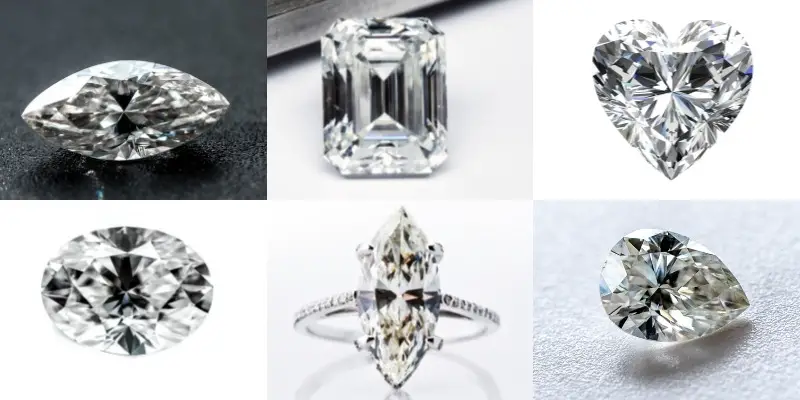
Odd shapes make it much easier for the light to become trapped within tight angles (like 90) and thus form a dark shape. Please keep in mind that all diamonds may exhibit a dark shape in the center if they are poorly cut.
A bow tie effect is the result of a poor cut, not an inclusion within the stone. So you may sometimes find a poorly cut round brilliant with a very dark center (not the hearts and arrows pattern mind you !), or a bad emerald cut that will form a stylized bow tie in its center.
Evenly-cut diamonds don’t usually get a bow tie
Diamonds that have an even-sided circumference have less of a chance of showing a bow tie, because there are less odd angles for the light to bounce off. So diamonds that are cut into round brilliants, princess cut, cushion cut are less likely to have a bow tie.
Bow ties are not restricted to diamonds
Despite this talk being about diamonds, the bow tie effect is not restricted to diamonds. Diamonds showcase this effect very well, as diamond offer spectacular light shows. But, other gems can show a bow tie, even if it will appear less severe. So you may find sapphires, moissanite, quartz, emeralds, morganite, and various other gems that have a bow tie.
The reason is that the bow tie effect is the result of a poor cut, which may have been necessary or not. But the cut is always the reason. You can find poorly cut diamonds the same way you can find poorly cut sapphire, rubies, amethyst, and any other colored or clear gem you can think of.
And then there is the refraction index. Any gem cutter must take into account each gem’s refraction index, because in the end a gemstone is just complex geometry.
The refraction index is the angle at which each gemstone reflects light within it, so how much it bends the light once it gets inside the stone. A diamond has a high index, 2.42, and all diamond cut styles are optimized to take this into account, make all diamonds shine their best.
The same cut applied to a gem with a lower refractive index, like a sapphire (1.7), will not work as well and may show dark patches in places it shouldn’t.
Do all diamonds have flaws ?
Most diamonds have various flaws in them, especially when it come to rough diamonds. When a diamond is cut form rough to polished most of the imperfections are cut away, but there is only so much that can be done.
Sometimes the imperfection is deep within the stone, and cutting it would mean losing a lot of diamond rough and obtaining two smeller carat diamonds that would sell for less.
Other times the diamond’s imperfections are very difficult to see unless you take a jeweler’s loupe and specifically look for something wrong. Those are considered the F or IF diamonds and they are the most expensive.
And other times the imperfections are plain to see and they make the diamond that much more impressive. Examples are salt and pepper diamonds, grey or black diamonds, and white (milky) diamonds. All of these are heavily included diamonds that actually celebrate their imperfections. They do not shine as brightly nor are as brilliant as clear diamonds, but they have a special charm of their own.
So don’t fret too much over your diamond’s imperfections. These are very common and getting one that is perfectly clear is actually difficult and incredibly expensive. Especially if you’re looking for natural stones.

I’m the main author for jewelrymaterialguide.com. I started this site after we did tons of research before our wedding and noticed that there is information about rings, jewelry, and so on that is really hard to find on the internet.

